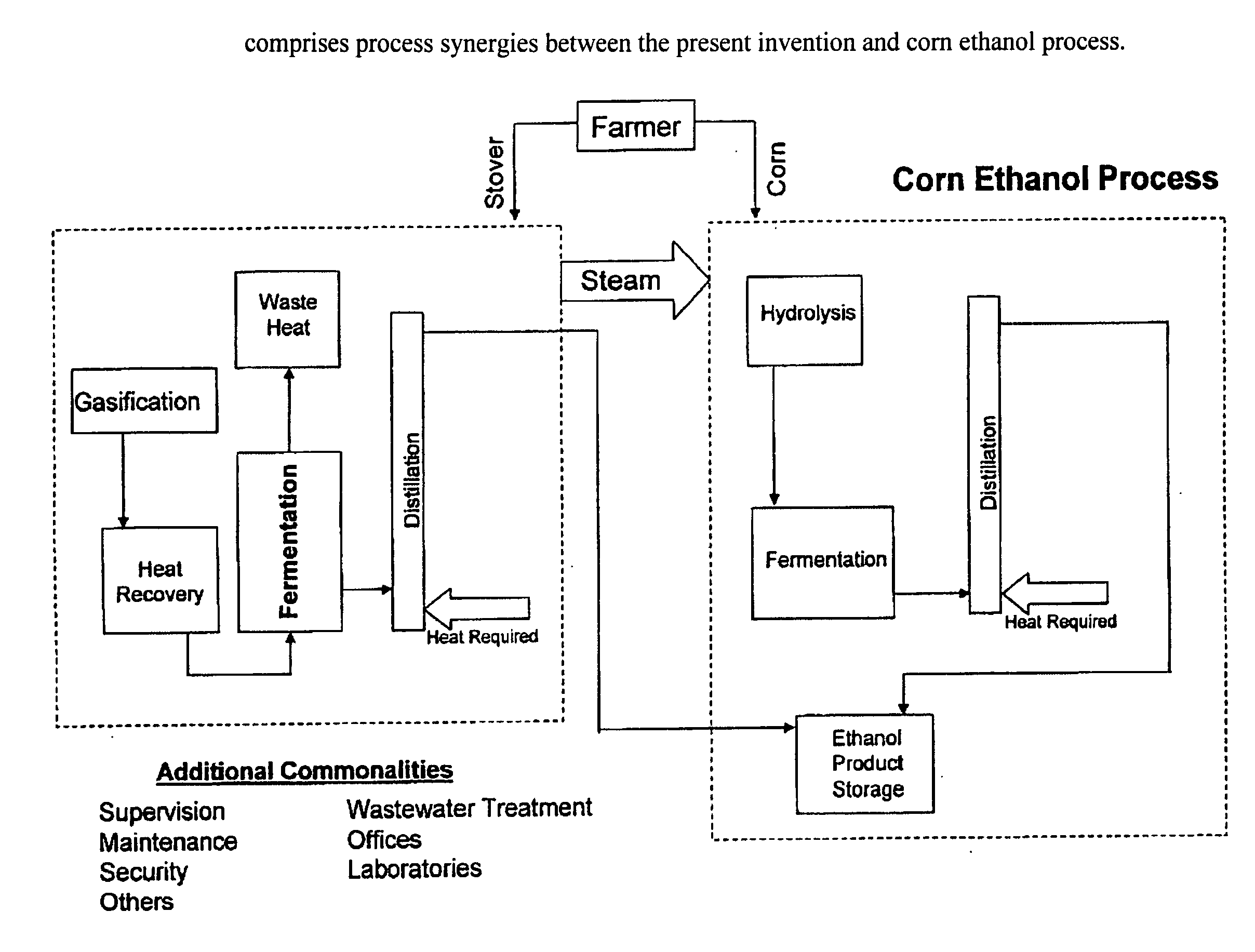Methods for sequestering carbon dioxide into alcohols via gasification fermentation
a technology of carbon dioxide and alcohol, which is applied in the direction of combustible gas production, combustible gas purification/modification, biomass after-treatment, etc., can solve the problems of low bulk density carbonaceous feedstock, and fermentation step can also negatively affecting alcohol production
- Summary
- Abstract
- Description
- Claims
- Application Information
AI Technical Summary
Benefits of technology
Problems solved by technology
Method used
Image
Examples
examples 1-7
2-Stage Gasifier with CO2 Injected in the First Stage (Lower Chamber)
[0076]In this example oxygen is introduced in the first and second stages as follows in order to attain temperatures of 1400 and 2250 degrees F. in the first and second stage respectively. Carbon dioxide is introduced in the first stage (lower chamber) as indicated in the Table 3. Product syngas and ethanol product is obtained as in the table below.
examples 8-14
2-Stage Gasifier with CO2 Injected in the Second Stage (Upper Chamber)
[0077]In this example, oxygen is introduced in the first and second stages as follows in order to attain temperatures of 1400 and 2250 degrees F. in the first and second stage respectively. Carbon dioxide is introduced in the second stage (upper chamber) as indicated in the table below. Product syngas and ethanol product is obtained as in the Table 4.
examples 15-20
2-Stage Gasifier with CO2 Injected in Both the First Stage (Lower Chamber) and Second Stage (Upper Chamber)
[0078]In this example oxygen is introduced in the first and second stages as follows in order to attain temperatures of 1400 and 2250 degrees F. in the first and second stage respectively. Carbon dioxide is introduced in both the first stage (lower chamber) and second stage (upper chamber) as indicated in the table below. Product syngas and ethanol product is obtained as in Table 5.
PUM
 Login to View More
Login to View More Abstract
Description
Claims
Application Information
 Login to View More
Login to View More - R&D
- Intellectual Property
- Life Sciences
- Materials
- Tech Scout
- Unparalleled Data Quality
- Higher Quality Content
- 60% Fewer Hallucinations
Browse by: Latest US Patents, China's latest patents, Technical Efficacy Thesaurus, Application Domain, Technology Topic, Popular Technical Reports.
© 2025 PatSnap. All rights reserved.Legal|Privacy policy|Modern Slavery Act Transparency Statement|Sitemap|About US| Contact US: help@patsnap.com



